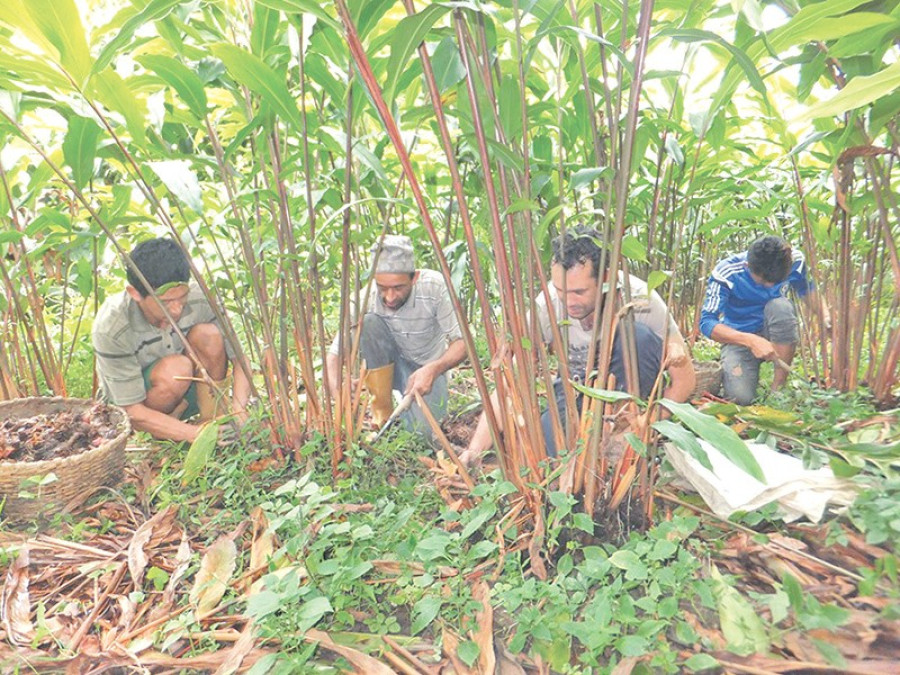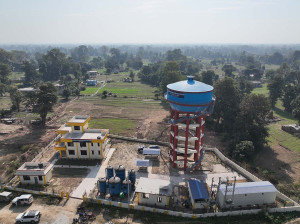Money
High returns drive Baglung farmers to growing cardamom
Nepal is the world’s largest producer of large cardamom, accounting for half of the global production
Prakash Baral
Farmers in Baglung in central Nepal are being increasingly attracted to planting cardamom due to high potential returns from the cash crop. The spice is a high value cash crop mainly produced in eastern Nepal. Of late, commercial production has spread to other parts of the country.
Tulsi Ram Poudel, a farmer from Barang Rural Municipality-2, used to grow paddy and maize. He had even tried vegetable farming to manage his daily expenses. Now he says he has switched to cardamom farming as the cash crop gives a good rate of return. “Compared to growing cereal crops and vegetables, cardamom production has helped me earn more,” said Poudel.
Cardamom prices fluctuate widely almost every year. Even then, farmers in the area are highly optimistic of earning good money by selling cardamom, said Poudel. According to him, the product used to fetch up to Rs2,800 per kg three years ago. The price came down to as low as Rs550 per kg during the slump period.
Poudel, who claims to have introduced cardamom farming in the area, has 400 cardamom plants in his field. Poudel said that more than 25 farmers had switched to the cash crop from traditional food crops. According to him, the rural municipality has also given priority to cardamom cultivation, targeting to produce 50 tonnes of the seeds in the next two years.
Rupadevi Sharma, a technical assistant of the rural municipality, said they were providing training and other logistic support to farmers to encourage them to take up cardamom farming. The local authority has so far installed eight drier plants at a cost of Rs70,000 each. Krishna Prasad Sharma, chairman of the rural municipality, said the local government had provided the driers free of cost to farmers.
Local farmers have also formed a group named Namuna Alaichi Krishi Samuha to promote cardamom production. Bimal Prasad Sharma, chairman of the group, said a single farmer can earn Rs400,000 to Rs500,000 annually if the plant can be protected from pests. Man Bahadur BK of Tara Khola Rural Municipality-2 said he switched to cardamom cultivation from millet production. According to him, he was living a hand-to-mouth existence when he was growing millet. Now he earns around Rs200,000 annually just from his cardamom crop.
Farmers were also encouraged to engage in cardamom cultivation after the local authority moved to launch a focused programme in Argal and Amarbhumi to promote commercial cardamom production. Farmer Tulasi Roka said she expected to earn Rs400,000 this year from her cardamom crop. “This could also help prevent youths from going abroad to seek jobs.
The local authority has identified 6,000 hectares as a cardamom production block. It plans to construct a collection centre and warehouses to protect farmers from extreme price fluctuations of the cash crop.
Nepal is the world’s largest producer of large cardamom. Other countries where this cash crop is produced are India and Bhutan.
According to a report entitled National Sector Export Strategy of Large Cardamom 2017-21 released by the Ministry of Commerce last year, Nepal produces more than 6,600 tonnes of the spice annually, accounting for more than half of the annual world production of around 12,000 tonnes.




 17.12°C Kathmandu
17.12°C Kathmandu.jpg)















